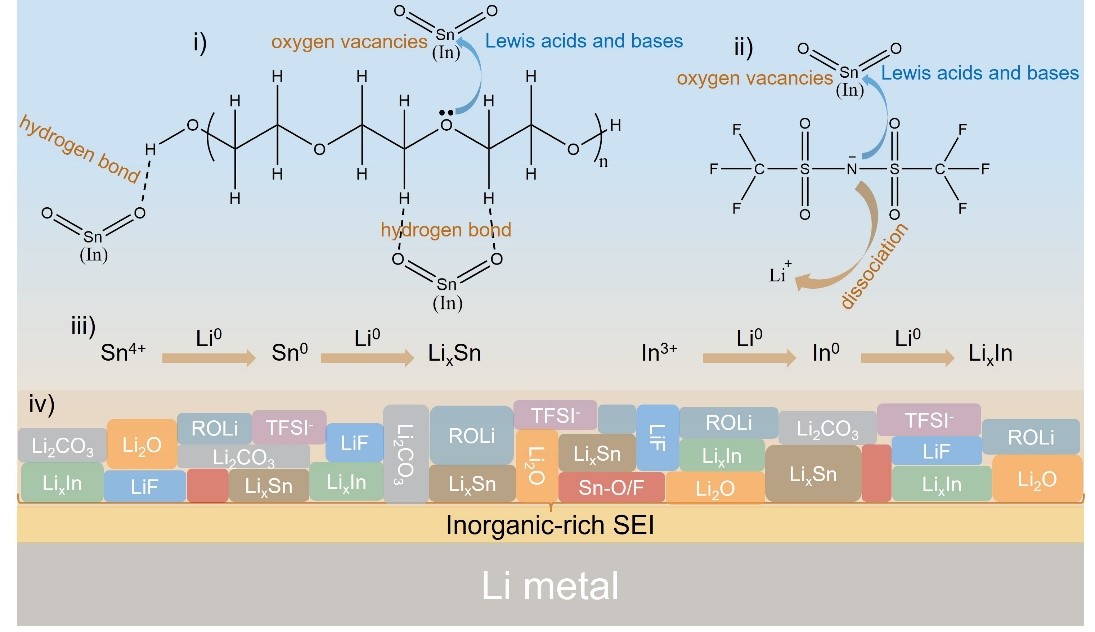2025-8-19:祝贺21级博士研究生陈轩锋研究论文在Advanced Functional Materials (IF 18.5)发表!
发布时间:2025-08-18
点击次数:
Reinforced Anti-Oxidative Degradation and Interface Stabilization in Bimetal Oxide Filler-based PEO Electrolytes for Lithium Metal Battery
Xuanfeng Chen1, Zhaoyue Wang1, Mingjiang Si1, Ziang Jiang1, Mengting Liu2, *, Xianwen Wu3, *, Feixiang Wu1, *
* Corresponding Authors:
Mengting Liu (mengtingliu@xjtu.edu.cn), Xianwen Wu (wxwcsu2011@jsu.edu.cn), Feixiang Wu (feixiang.wu@csu.edu.cn);
Abstract
Polyethylene oxide (PEO) electrolytes hold significant potential for the next-generation all-solid-state lithium metal batteries. However, their practical application is limited by low ionic conductivity, unstable solid electrolyte interphase (SEI) and, especially, poor oxidative stability under high voltage. Herein, a filler-modified PEO is proposed to address these challenges. The filler, TIO (SnO2 doped with In2O3), is rich in oxygen vacancies, acting as Lewis acids to interact with TFSI-, which releases more Li+ and achieves a higher ionic conductivity and Li+ transference number. Moreover, Sn4+/In3+ in the TIO can form alloy phases with lithium metal to facilitate Li+ deposition and transport across the SEI. Consequently, Li//LiFePO4 cell using the filler-modified PEO exhibit a reversible capacity of ~140 mAh g-1 and excellent capacity retention of 92% over 800 cycles at 0.2 C. Importantly, the TIO interacts with hydroxy groups and H atom on α-C in PEO, reducing PEO's reactivity and extending its decomposition potential to 4.75 V. Owing to the inhibited oxidative decomposition upon high-voltage cycling, the filler-modified PEO enables Li//LiNi0.8Co0.1Mn0.1O2 cell to achieve an outstanding initial capacity of 170 mAh g-1 and maintain 70% capacity retention over 200 cycles at 0.5 C at a high cut-off voltage of 4.3 V.

